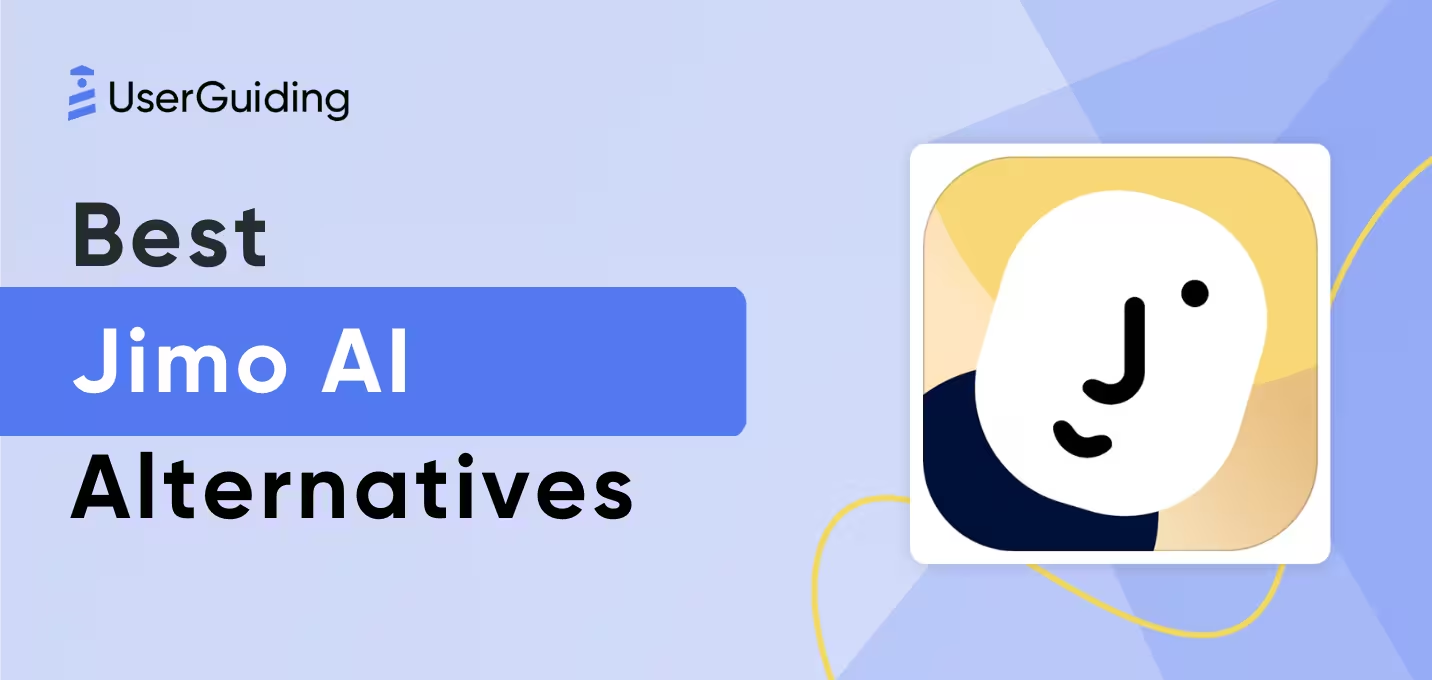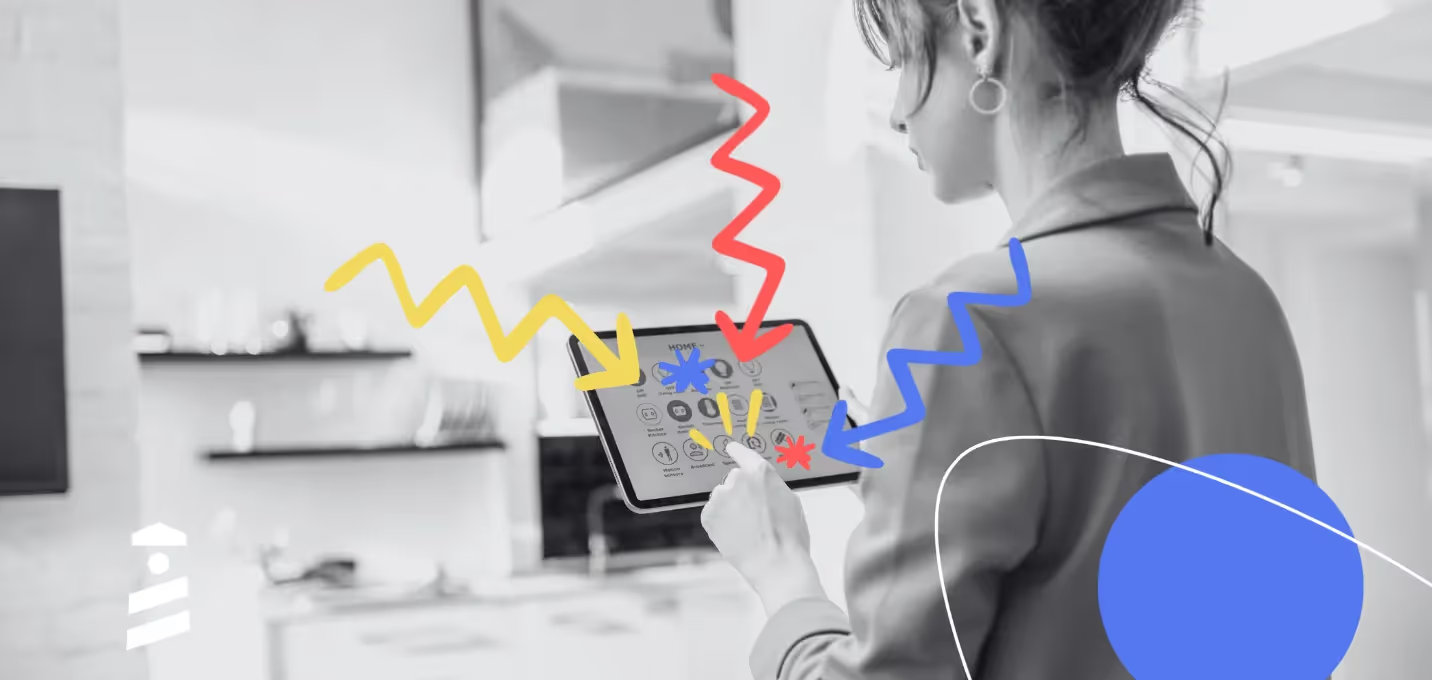

Imagine you've just spent months perfecting a new feature for your product.
You're excited to introduce it to your users, hoping it will improve their experience.
But what if they never even notice it?
That’s what happened to Microsoft in 2006. Their survey to discover the new features users desired for Office 2007 showed them that
“90% of the requested features were already included in the previous version.”
In other words, Microsoft users did not know the features they wanted already existed. What could Microsoft have done better?
I’ll save you some time: investing in feature discovery.
Feature discovery is all about ensuring that users are aware of feature updates and understand their benefits.
In this article, you’ll learn:
- What feature discovery is
- How it’s different from feature adoption
- Why it’s important
- How you can boost feature discovery for higher adoption
Ready, set, go!
TL;DR
- Feature discovery is all about making users aware of new features, while feature adoption is convincing users to use and benefit from new features.
- Without feature discovery, you risk overwhelming your users with poorly placed UI, unclear feature explanations, and inconsistent messaging.
- With intuitive UI, guided tutorials, A/B testing, and community engagement, you can improve your product’s feature discovery.
- Tools like UserGuiding help you boost feature discovery with in-app messaging, tooltips, and hotspots.
What is Feature Discovery?
Feature discovery is the process of introducing new or updated product features to existing users.
The goal is to ensure that users are aware of these changes, understand their benefits, and ultimately adopt them.
Opinew is a great example of this. Not only did they increase their feature discovery with UserGuiding’s interactive onboarding tours, but they also made users part of this discovery journey:

While traditional methods like email announcements, blog posts, and social media can inform users about new features, they often fall short of truly showcasing their value.
To effectively introduce new features, it's essential to:
- make features easily discoverable within the product
- provide clear and concise explanations
- offer interactive walkthroughs or demos
- highlight the value proposition
- gather feedback and iterate
Difference Between Feature Discovery and Feature Adoption
You might ask: “Is this not what feature adoption is? Why are you calling it feature discovery?”
And I’ll answer: “They’re actually related but not the same thing.”
Feature discovery refers to the process of introducing new or updated features to users and making them aware of their existence.
It's about ensuring that users know these features are available and understand their basic functionality.
Feature adoption, on the other hand, is the process of users actually using and benefiting from the new features.
It's about convincing users to try the features, understand their value, and incorporate them into their regular workflow.
3 Reasons to Focus on the Feature Discovery Process
Enhanced User Experience
When users are bombarded with too many new features at once, it can be overwhelming and difficult to keep up.
By introducing features gradually and providing clear explanations, you can help users to acclimate to changes without feeling overwhelmed.
Also, if users feel like their needs and preferences are not being considered, they may become disengaged and less likely to continue using the product.
Feature discovery can help to demonstrate that you are listening to their feedback and making efforts to improve the product.
Improved Product Adoption
If users are not familiar with the full range of features available to them, they may be missing out on valuable functionalities.
Feature discovery can help users to unlock the full potential of the product and maximize its benefits.
Similarly, if users are unable to customize the product to their specific needs, they may feel limited and frustrated.
Feature discovery can introduce new customization options that allow users to tailor the product to their preferences.
Better Competitive Advantage
If users feel like the product is not keeping up with the latest trends or technologies, they may become dissatisfied.
Feature discovery can help to ensure that the product remains relevant and up-to-date by introducing new features that address emerging user needs.
This can differentiate your business from competitors and attract new customers.
Common Challenges to Feature Discovery
Overwhelming Complexity
Introducing a large number of new features in a single update can overwhelm users, and you’re risking making things difficult for them to understand and adopt each one.
Similarly, if you don’t prioritize new features based on their importance or user needs, users may become confused and focus on less relevant features.
Poor User Interface Design
Your users don’t want to play hide and seek. They should be able to find features without screaming at their screen.
If new features are not prominently displayed or easily accessible within the user interface, they may even miss out on them entirely.
Use clear and concise labels to help users understand the purpose of new features.
Lack of Clear Explanations
Without clear and concise explanations of new features, users may struggle to understand their benefits and how to use them effectively.
In a similar way, using complex technical language can make it difficult for users who are not experts to understand new features.
To avoid that, try using images, videos, or tutorials to demonstrate how new features work.
Inconsistent Messaging
If different channels (e.g., in-app notifications, emails, social media) provide conflicting or inconsistent information about new features, your users may become confused.
Even worse, if there is a lack of coordination between different teams responsible for feature discovery and communication, you might entirely shut down enthusiastic users.
So keep all communication channels updated with the latest information about new features.
Insufficient Context
If new features are not introduced in the context of solving a specific user problem or pain point, users may not see the value in adopting them.
The way to fix it?
Use storytelling to create a compelling narrative around new features, which will make them more memorable and engaging.
Technical Difficulties
If new features are difficult to set up or require complex technical knowledge, users will eventually give up on them without even trying these important features first.
It is your responsibility to ensure that the features are compatible with as many devices as possible. Also, make sure to simplify the technical setup and configuration process.
Limited Support or Resources
If users cannot easily access support or resources to resolve issues or get help with new features, they may become frustrated and give up.
You can easily avoid this fate by creating resource centers or integrating knowledge bases into your onboarding flow.
Resistance to Change
Some users may be resistant to change and may be reluctant to adopt new features, even if they are beneficial.
Think about your own experiences as a user with other apps or products.
Sometimes, you just want to stick with what you are familiar with, so it shouldn’t come as a surprise that your users might want that for themselves, too.
Although you cannot completely control this situation, you can still introduce new features gradually to give users time to adjust.
Timing Issues
If users are not prepared for new features, they may be less likely to adopt them, especially if they require significant changes to their workflows.
You can avoid introducing new features during peak usage times or when users are likely to be busy or create excitement and anticipation for new features through teaser campaigns or sneak peeks.
Lack of Personalization
One of the biggest mistakes that you can make when it comes to feature discovery is to have a one-size-fits-all approach.
Your users want to see how you individually tailor new features to their needs and preferences, so they can resonate with them.
Similarly, if you take away the option to customize these features, they will feel limited and frustrated.
How to Boost Feature Discovery for Higher Adoption
Now that you know what the challenges and pitfalls of your product’s feature discovery journey might be, it’s time to talk about how you can leverage feature discovery to grow your business.
Below, you’ll find some of the best tips to give your feature discovery plan a head start.
But if you want a tool that boosts feature discovery by 47%, as Indicata did, start a free trial today with UserGuiding instead!
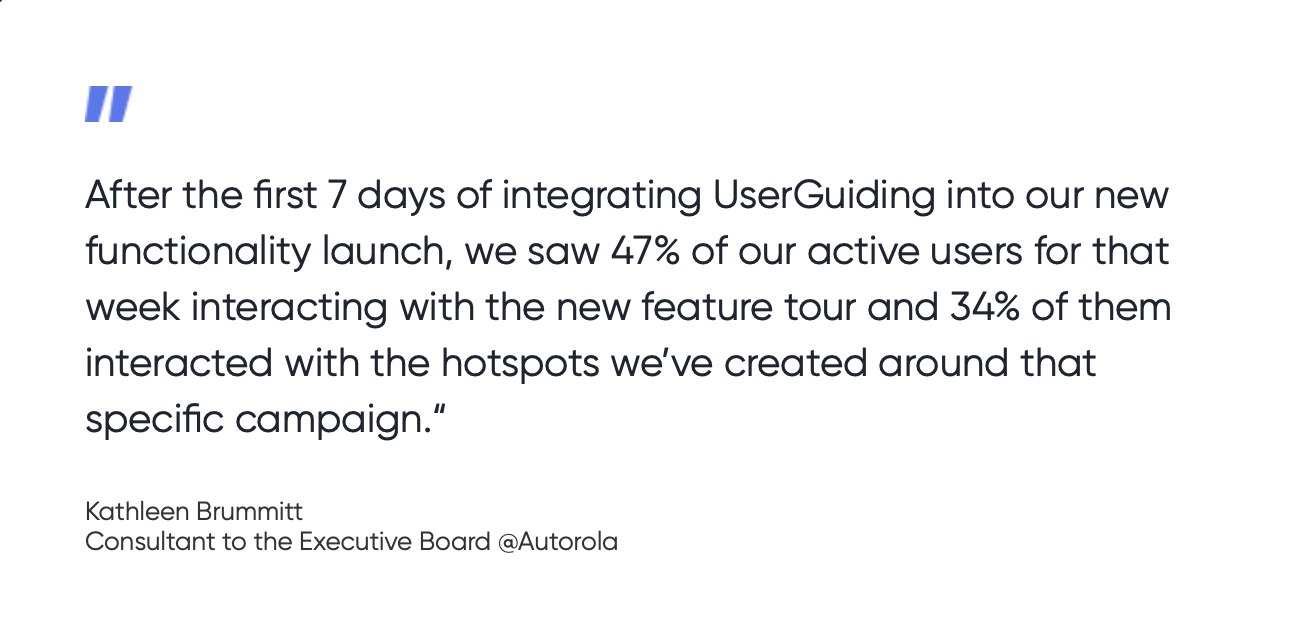
Target notifications based on user behavior for personalization
If a user frequently uses the "search" feature, send a notification about a new advanced search option. Quick and simple.
Check out this similar example from Drift:
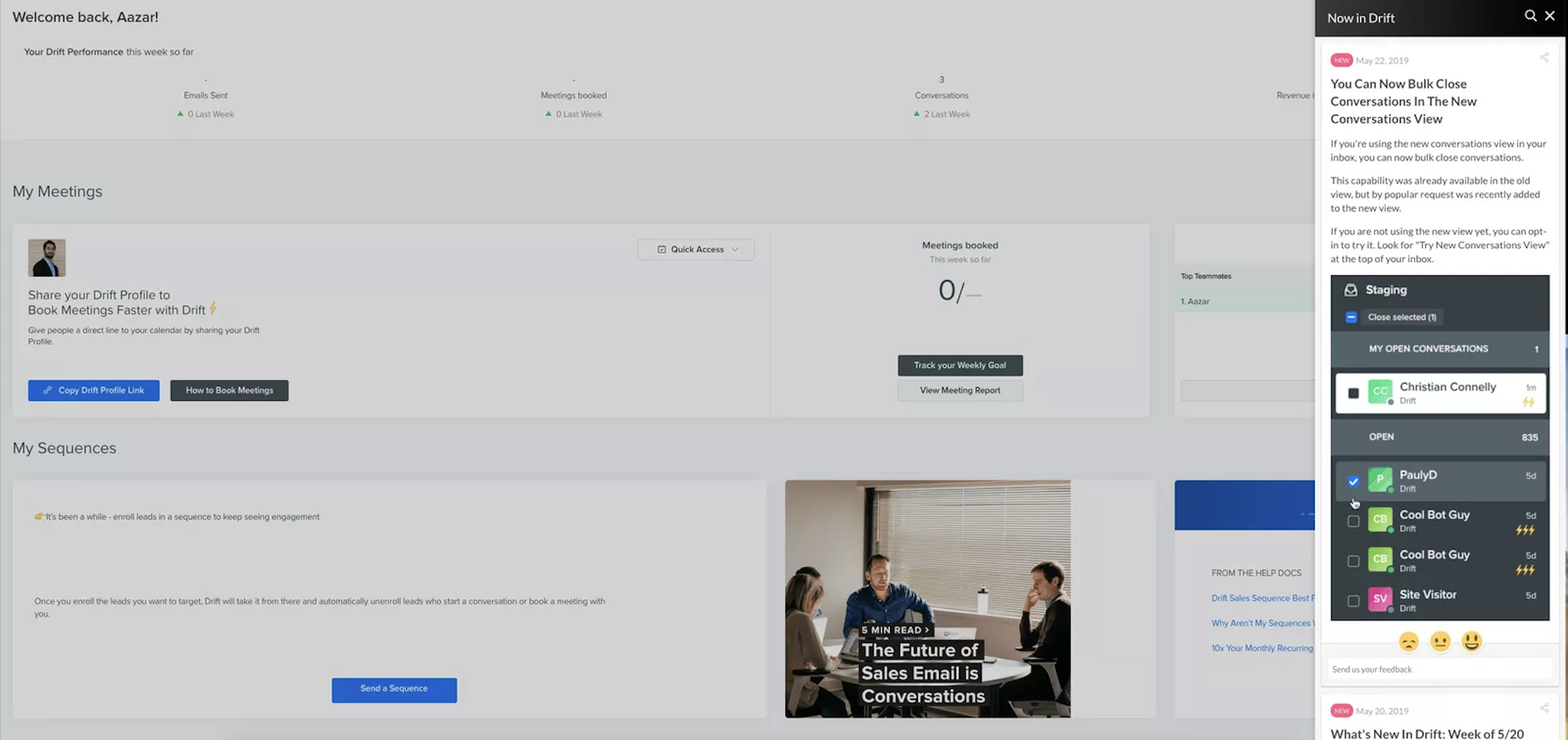
Notice how they use sidebar notifications to announce new features. They don’t over-explain the feature.
Instead, briefly describe what they can do with that feature. They can “opt-in” to try it now or check it out later when they have time, which is great for not overwhelming the user.
Time in-app messages strategically for proactive communication
There’s nothing more satisfying than streamlining things for your users. And communicating clearly.
So, if a user is about to complete a task, you can display a message suggesting a new feature.
You can also use this in-app message to make the user aware of the features they haven’t explored yet.
See how Slack handles this communication as a pro:
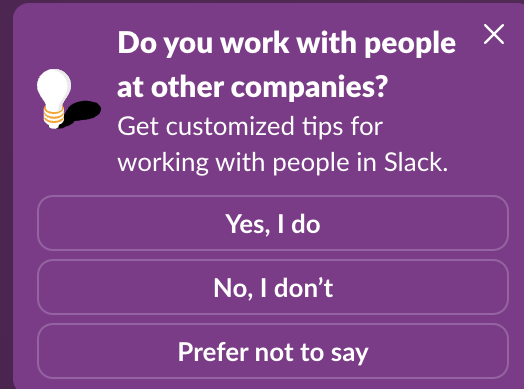
Slack gently nudges its users to answer a simple in-app survey so it can customize the best features based on whether the users work with people at other companies or not.
The users don’t have to attend long, tedious meetings to learn about the features they haven’t used yet but fits their business perfectly.
Employ visual cues strategically for an intuitive user interface
If a new feature is related to a specific task, place it within the relevant section of the app. Or you can use a tooltip that appears when a user hovers over a new icon.
UserGuiding’s tooltip feature is actually great for planting visual cues like these. See how it looks:

Create interactive tutorials with step-by-step instructions for guided onboarding
For a complex feature like embedding a code to your web app, consider providing a tutorial with clear steps and visual demonstrations.
If a user is stuck on a specific step, offer a helpful tooltip or in-app message.
Showcase success stories to highlight value proposition
Share real-world examples of how users have benefited from new features.
Experiment with different approaches for A/B testing
Test various messaging, placement, and design elements to find the most effective combinations.
Create active online communities for community engagement
Foster a sense of belonging and encourage users to discuss new features.
Share updates, behind-the-scenes content, and user-generated content.
Offer incentives or rewards for users who create content related to new features.
3 Inspiring Feature Discovery Examples
Flowla
Flowla increased their user activation rate (by leveraging feature discovery) by 24%. It was not magic, of course.
But was it magical? Sure. UserGuiding’s interactive tooltips and interactive product tours.
Right before their Product Hunt launch, they needed to find a way to make the new users aware of their new solution, but also the existing users had to understand and adapt to these updates in a short period of time.
After implementing product tours to prompt users to click on specific items during their initial experience with the product, Flowla progressed to the next phase, which focused on activation: getting users to share their first flow.
But instead of making the grave mistake of overwhelming users with multiple guides, Flowla showed only one tooltip that guides users on how to access edit mode and make changes—essentially familiarizing them with the product.
Read more of Flowla’s success story here.
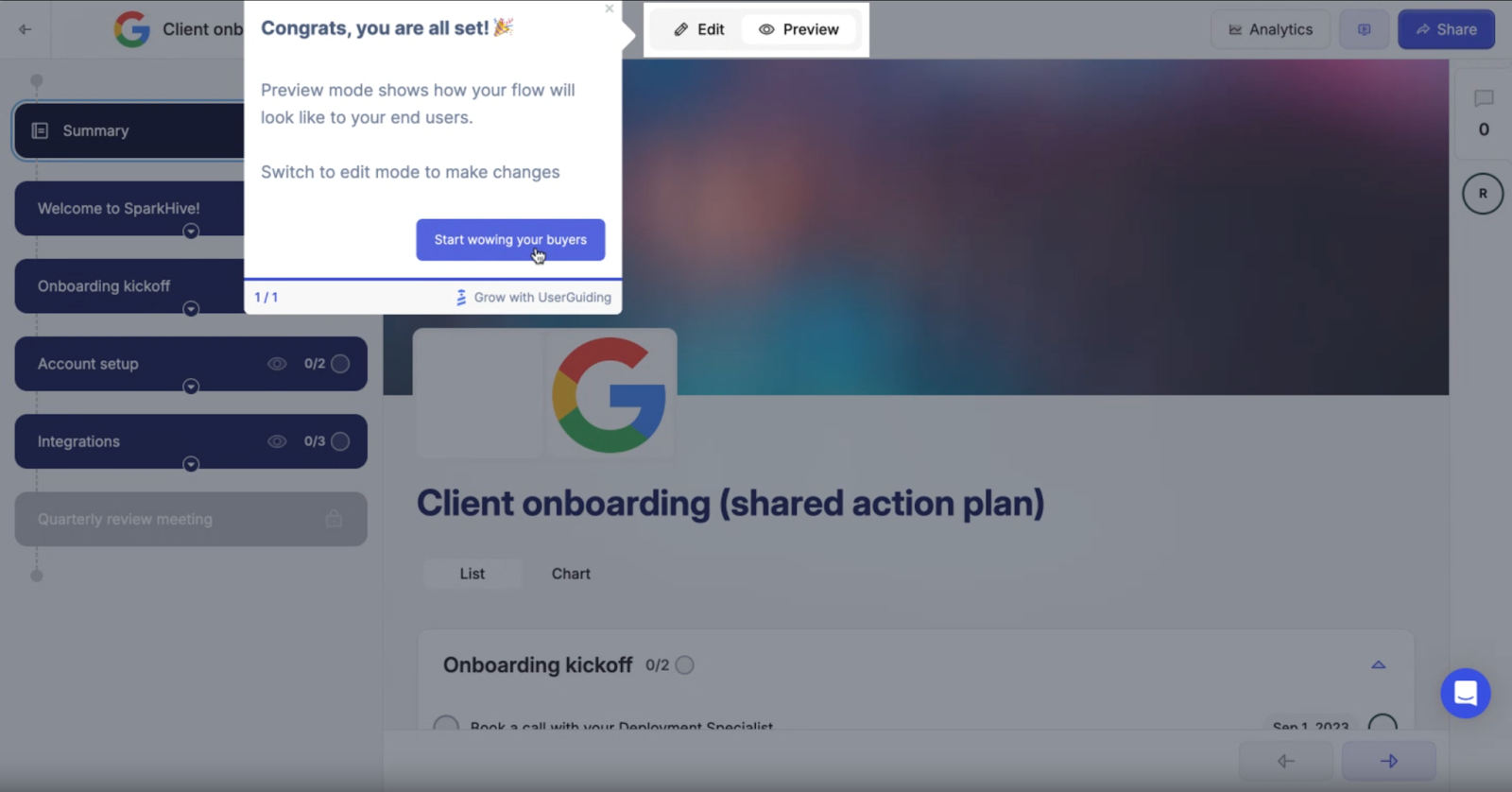
TimeSolv
TimeSolv is a legal time tracking and billing platform. Their struggle is a little unique.
Because they knew they needed interactive in-app elements like tooltips and announcements to announce features, push upsells, and more.
Even their product team was aware of the need. Then, what was not working?
They had to wait for their developers to clear their logs and work on creating these elements. It sometimes takes up to a month to develop a single hotspot and TimeSolv needed more than that.
They tried UserGuiding and created numerous interactive in-app elements like hotspots, surveys, tooltips, and product tours.
Instead of relying on email announcements for product updates and on developers to design these elements, they brought everything under TimeSolv’s roof and turned their platform into a complete one-stop experience.
See one of their announcement modals, which are perfect for increasing feature discovery:

You can read how TimeSolv has seen more than a 10% increase in in-app survey completion thanks to UserGuiding here.
Instagram is well-known for listening to its users. They introduced Reels after TikTok took off as a short-form video platform.
They launched Stories after seeing users wanted to post for quick, in-the-moment pictures that otherwise wouldn’t have been on their profile.
But how did they put these features in front of users? Check out these examples:
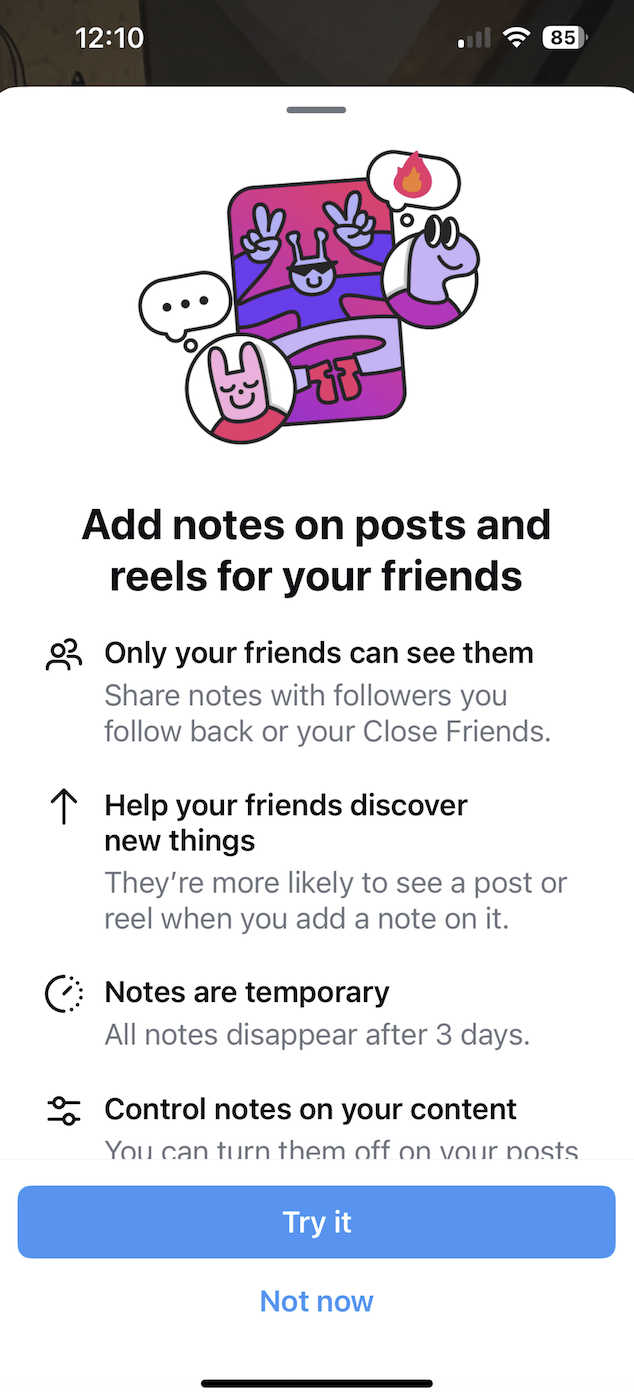
Similar to Slack, Instagram puts the feature in front of the user with an in-app announcement.
Notice how they provide a very clear explanation of the feature's purpose—no long sentences or technical jargon.
The user can try this new feature on the spot or explore it on their own later. They are in control of their own experience.
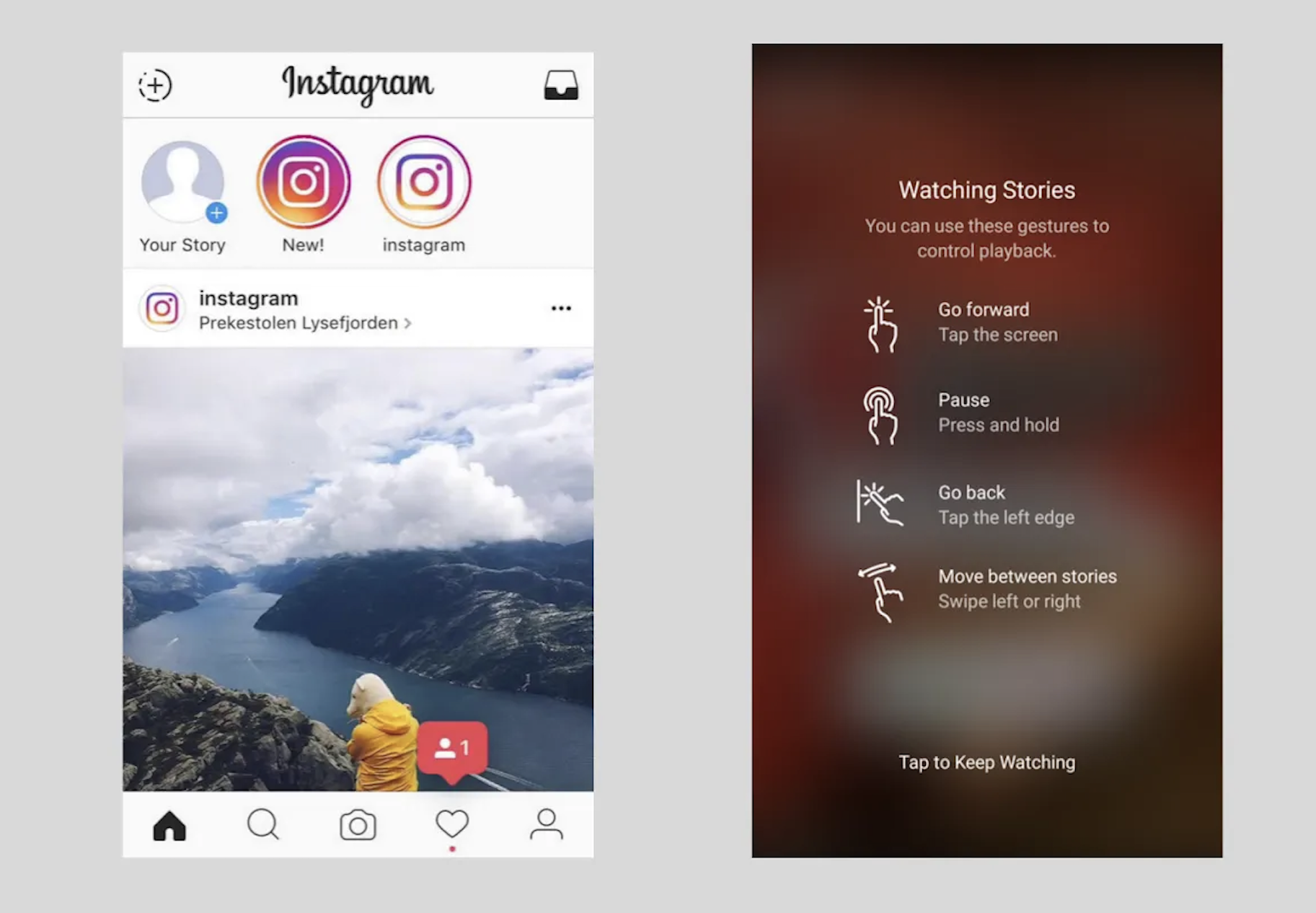
The visual cues appear as soon as the user opens the app, and Instagram immediately shows how the feature is used.
The user can “tap” to keep watching stories, which encourages them to get the value instantly.
Best Practices for Measuring Feature Discovery Rates
Coming this far, there is one other aspect you should know: measuring.
Now is the time to introduce the best four practices for measuring feature discovery rates:
1- Define discovery clearly
Set clear criteria for when a feature is considered "discovered." There are two types of discovery you can use here:
- Explicit Discovery: When users click on a tooltip, onboarding checklist item, or new feature announcement.
- Implicit Discovery: When users reach the feature organically through navigation or search.
2- Segment your users
By segmenting your users, you'll identify which segments miss key features. For example, you can measure the discovery rates of different user groups, such as:
- New vs. returning users
- Free vs. paid users
- Role-based segments (admin, editor, viewer)
3- Visualize in-app click paths and funnels
While highlighting the path for users through tooltips, banners, and modals, you should use path analysis to identify how users arrive at a feature.
Moreover, you can set up funnels to see how many users drop off before reaching the feature to check UX blockers and understand whether discoverability is a navigation issue.
4- Track events
This step isn't only about the discovery; it's also about the journey users take before the discovery. You can use third-party analytics tools to track:
- Feature entry points (e.g., clicks on menu items or hotspots)
- Usage patterns after the feature is discovered
- Drop-off before discovery
Key Takeaways
By effectively educating users about new features, you can drive user engagement, improve product adoption, and gain a competitive edge.
You should prioritize user experience to overcome common challenges like overwhelming complexity, poor UI design, and a lack of clear explanations.
Strategies like proactive communication, guided tutorials, and community engagement can significantly boost feature discovery.
Additionally, leveraging powerful tools like UserGuiding can streamline the process and enhance user experience.
Frequently Asked Questions
What is feature discovery?
Feature discovery is the process of introducing new or updated product features to existing users and ensuring they are aware of, understand, and adopt these changes.
Why is feature discovery important?
Feature discovery is crucial for driving user engagement, improving product adoption, and gaining a competitive edge. It helps users understand new features, unlock the full potential of the product, and stay up-to-date with the latest trends.
What strategies can businesses use to boost feature discovery?
Strategies include proactive and personalized communication, intuitive user interface design, guided tutorials, and onboarding, highlighting the value proposition, A/B testing and iteration, and community engagement.
What tools can help with feature discovery?
Tools like UserGuiding can streamline feature discovery by providing features such as in-app tooltips, walkthroughs, and interactive onboarding.
How can businesses measure the effectiveness of their feature discovery efforts?
Businesses can track metrics like user engagement, product adoption rates, customer satisfaction, and support ticket volume to measure the effectiveness of their feature discovery strategies.

















.svg)
.svg)
.svg)
.svg)
.svg)

.svg)
.svg)












.svg)
.svg)




.png)
